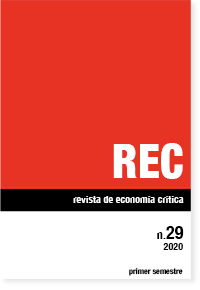Money, power, and monetary regimes: why the nature of money matters
Keywords:
history of money, chartalism, counterfeiting, monetary sovereignity, monetary regimesAbstract
Money, in this paper, is defined as a power relationship of a specific kind, a stratified social debt relationship, measured in a unit of account determined by some authority. In modern capitalist economies, the currency is also a simple public monopoly. As long as money has existed, someone has tried to tamper with its value. We support this approach by examining a history of counterfeiting, as well as that of independence from colonial and economic rule, is another way of telling the history of money as a creature of the state. This historical understanding of the origins and nature of money serves to illustrate the institutional obstacles or unnecessary intermediate steps involved in the coordination of fiscal policy and monetary policy under different institutional monetary arrangements in the modern world. These are important aspects in the discussion about how institutions are designed to use the powers that the modern nation-state has as monopolist of currency.







